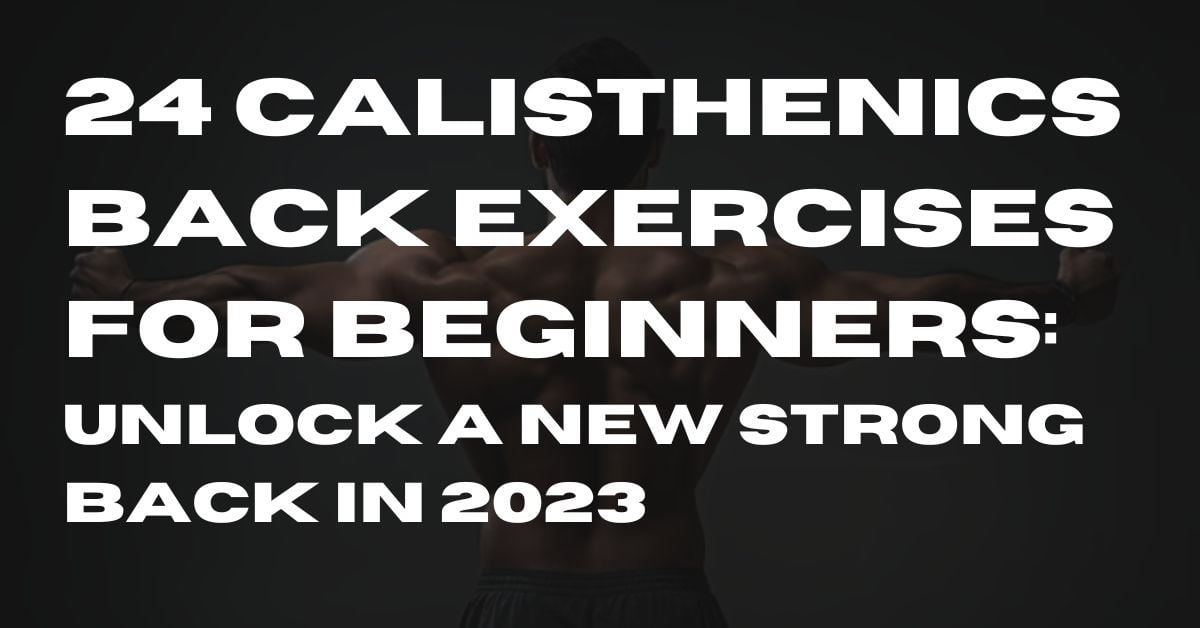Are you prepared to embark on a voyage towards a more robust and resilient back, all without the need for extravagant gym equipment?
If you’re in search of an entry-level approach to crafting a potent upper body, you’ve landed in the ideal spot.
Within this comprehensive manual, we’ll delve into 24 beginner-friendly calisthenics back workouts.
Whether you aim to enhance your posture, alleviate back discomfort, or simply boost your overall fitness, these exercises serve as your ticket to a healthier and more sturdy back.
So, let’s immerse ourselves in this all-encompassing workout regimen, unlocking the latent potential of your back muscles while making significant strides in your overall fitness journey.
Table of Contents
Understanding The World Calisthenics
What Is Calisthenics?
Calisthenics is the art of harnessing your body weight to cultivate strength, flexibility, and endurance.
It’s an exercise form that necessitates no specialized gear, rendering it accessible to individuals everywhere.
In the realm of calisthenics, you’ll execute an array of bodyweight maneuvers such as push-ups, pull-ups, squats, and planks, utilizing your muscles as natural resistance.
It offers a dynamic and captivating avenue for enhancing your physical fitness, boosting your metabolism, and elevating your overall well-being.
Calisthenics adopts a holistic approach to fitness, advocating for functional strength that can enhance your daily activities.
Furthermore, it’s an exceptional method for attaining a lean and toned physique.
Whether you’re a novice aspiring to kickstart your fitness journey or a seasoned athlete seeking a versatile workout regimen, calisthenics extends its offerings.
It remains a timeless and potent fitness practice that endures the test of time.
Are you ready to commence? Dive headfirst into the realm of calisthenics and unveil a healthier, more robust version of yourself!
For deeper insights and inspiration, explore this article on the advantages of calisthenics published by the National Center for Biotechnology Information.
The Advantages of Calisthenics
When it comes to amassing strength, enhancing flexibility, and reaching the pinnacle of physical fitness, calisthenics emerges as a juggernaut workout regimen.
This dynamic regimen, based on body weight, bestows a myriad of benefits that transcend the conventional gym routine.
Let’s delve into seven compelling reasons why embracing calisthenics as your primary fitness regimen is a prudent choice.
Holistic Muscle Activation
Calisthenics exercises engage multiple muscle groups concurrently, fostering a well-rounded and functional physique.
Whether you’re executing push-ups, pull-ups, or squats, you’re enlisting a broad spectrum of muscles, nurturing overall strength development.
A study featured in the Journal of Strength and Conditioning Research reveals that compound calisthenics exercises effectively activate both upper and lower body muscles, fueling muscle growth and functional strength (source).
Enhanced Flexibility
Calisthenics movements necessitate flexibility, facilitating improved joint mobility and expanded range of motion. Over time, this can mitigate the risk of injuries and amplify your overall physical performance.
Research conducted by the American College of Sports Medicine underscores how calisthenics exercises contribute to augmented flexibility and joint health (source).
Fortified Core Stability
A resilient core constitutes the bedrock of a sound physique. Calisthenics exercises such as planks and leg raises prove exceptional for cultivating core strength, which, in turn, can alleviate back discomfort and bolster posture.
A study in the Journal of Physical Therapy Science demonstrates that calisthenics exercises notably enhance core muscle endurance and stability (source).
Weight Management and Fat Loss
Calisthenics workouts efficiently incinerate calories, rendering them a potent tool for weight management and fat loss.
The amalgamation of strength training and cardiovascular elements aids in shedding surplus pounds and upholding a healthy body composition.
The American Council on Exercise reports that bodyweight exercises, such as those integral to calisthenics, can torch a substantial number of calories, aiding in weight reduction (source).
Minimal Equipment, Maximum Convenience
One of the most alluring attributes of calisthenics is its meager equipment prerequisite.
All you require is your body and an unoccupied space, affording it the status of a versatile and easily accessible workout option that you can engage in anytime, anywhere.
A study published in the Journal of Sports Medicine and Physical Fitness underscores the accessibility and convenience of calisthenics, rendering it an enticing choice for individuals leading hectic lives (source).
Mental Well-Being
Physical fitness and mental health are intrinsically linked. Involvement in calisthenics can elevate your spirits, reduce stress, and amplify your overall well-being.
The rhythmic and contemplative aspect of calisthenics exercises can serve as a form of mindfulness, fostering mental clarity.
Research featured in the Journal of Clinical Psychology suggests that routine physical activity, including calisthenics, exerts a beneficial influence on mental health and emotional well-being (source).
Versatility and Progression
Calisthenics presents a wide spectrum of exercises suited for individuals of all fitness levels.
Whether you’re a neophyte or a seasoned athlete, you can customize your calisthenics routine to harmonize with your capabilities and progressively challenge yourself as you grow more robust.
The International Journal of Sports Science & Coaching expounds on how calisthenics permits progressive overload, a foundational tenet of strength training that fosters continual improvement (source).
Why Calisthenics for Your Back?
Calisthenics offers a targeted approach to strengthening the muscles in your back.
Through exercises like pull-ups, bodyweight rows, and supermans, it engages the broad latissimus dorsi and the intricate muscles along your spine effectively.
What sets calisthenics apart is its functionality; it builds strength that seamlessly translates into daily activities, enhancing your posture and reducing the risk of back pain and injury.
The beauty of calisthenics lies in its minimal equipment requirement – a pull-up bar and your determination are all you need.
Calisthenics adapts to your fitness level, making it accessible to everyone. As you progress, you can make the exercises more challenging, ensuring continuous improvement.
Moreover, it fosters a mind-body connection and offers a diverse range of exercises to keep your routine engaging.
Back Calisthenics Workout for Beginners
Upper Body Back Exercises:
1. Superman
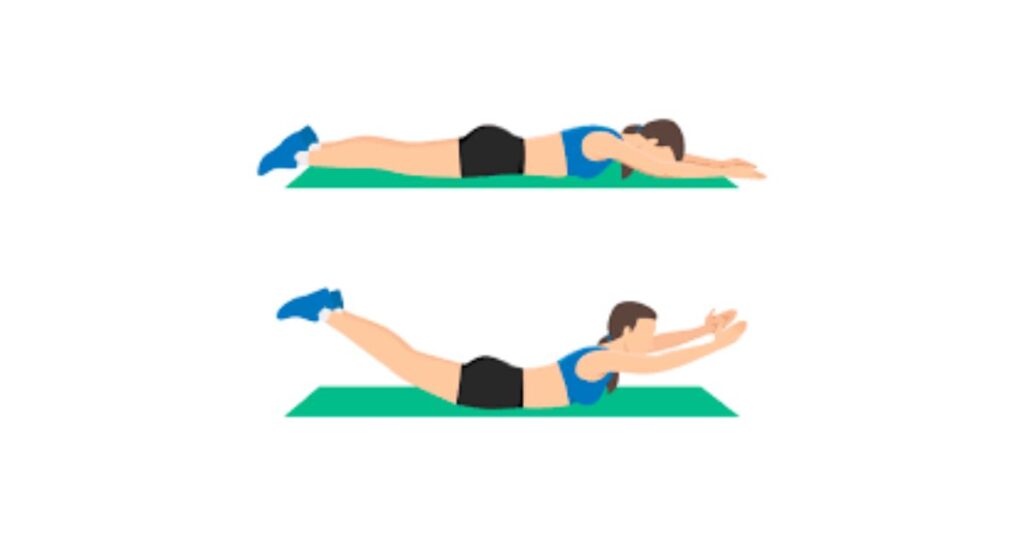
Steps:
- Lie face down on a mat with your arms extended forward.
- Simultaneously lift your arms, chest, and legs off the ground.
- Hold this position for a few seconds, focusing on engaging your lower back and glutes.
- Slowly lower your limbs back to the starting position.
Benefits:
- Strengthens the lower back, glutes, and hamstrings.
- Improves back extension and posture.
- Enhances the stability of the spine.
2. Cat-Cow Stretch

Steps:
- Begin on your hands and knees in a tabletop position.
- For the “cat” pose, round your back upward, tucking in your chin.
- For the “cow” pose, arch your back downward, lifting your head and tailbone.
- Alternate between these two positions, moving with your breath.
Benefits:
- Promotes spinal flexibility and mobility.
- Alleviates tension in the back and neck.
- Enhances awareness of spine alignment.
3. Bird Dog
Steps:
- Start in a tabletop position (on hands and knees).
- Simultaneously extend your right arm forward and your left leg backward.
- Keep your back straight and engage your core.
- Hold for a moment, then return to the starting position.
- Repeat with the opposite arm and leg.
Benefits:
- Strengthens the entire back and core.
- Improves balance and coordination.
- Enhances stability in the spine.
4. Plank
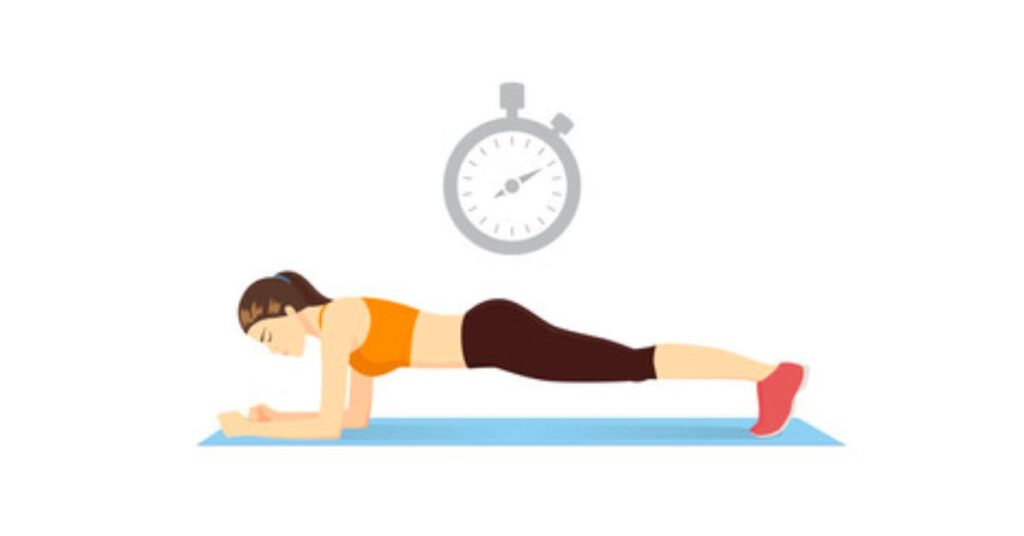
Steps:
- Begin in a push-up position with your forearms on the ground.
- Keep your body in a straight line from head to heels.
- Engage your core and hold this position.
- Aim to maintain it for as long as possible.
Benefits:
- Targets the entire core, including the lower back.
- Builds endurance and stability.
- Helps prevent lower back pain.
5. Cobra Stretch
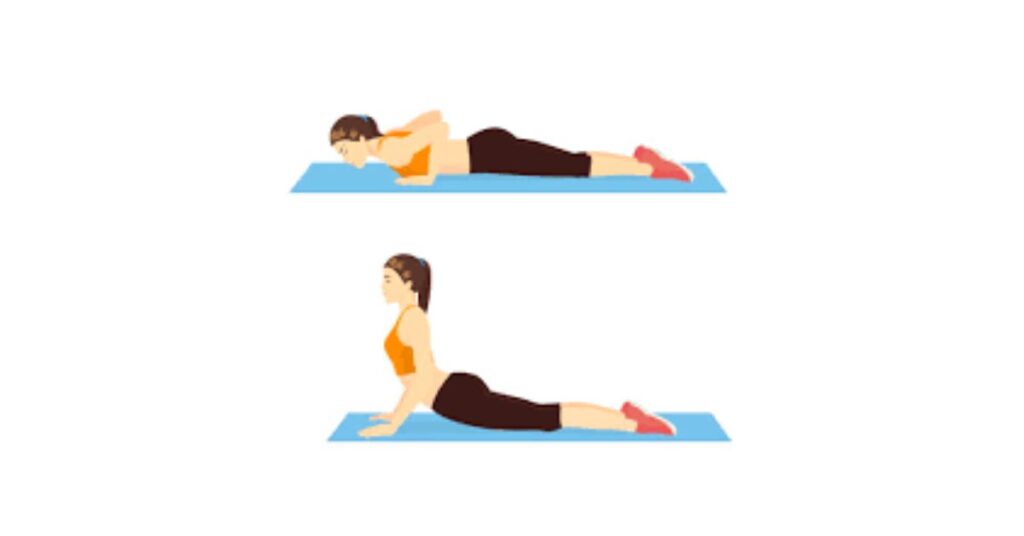
Steps:
- Lie face down with your hands under your shoulders.
- Press your upper body up, extending your arms.
- Keep your hips and legs on the ground.
- Gently arch your back and lift your chest, looking upward.
Benefits:
- Stretches the front of the body, including the abs.
- Relieves tension in the lower back.
- Promotes spinal flexibility.
6. Wall Angels
Steps:
- Stand with your back against a wall and feet about a foot away from the wall.
- Raise your arms so that your elbows and wrists are touching the wall.
- Slowly slide your arms up and down along the wall while maintaining contact.
Benefits:
- Activates the muscles between the shoulder blades.
- Improves shoulder mobility and posture.
- Enhances scapular stability.
7. Bodyweight Rows
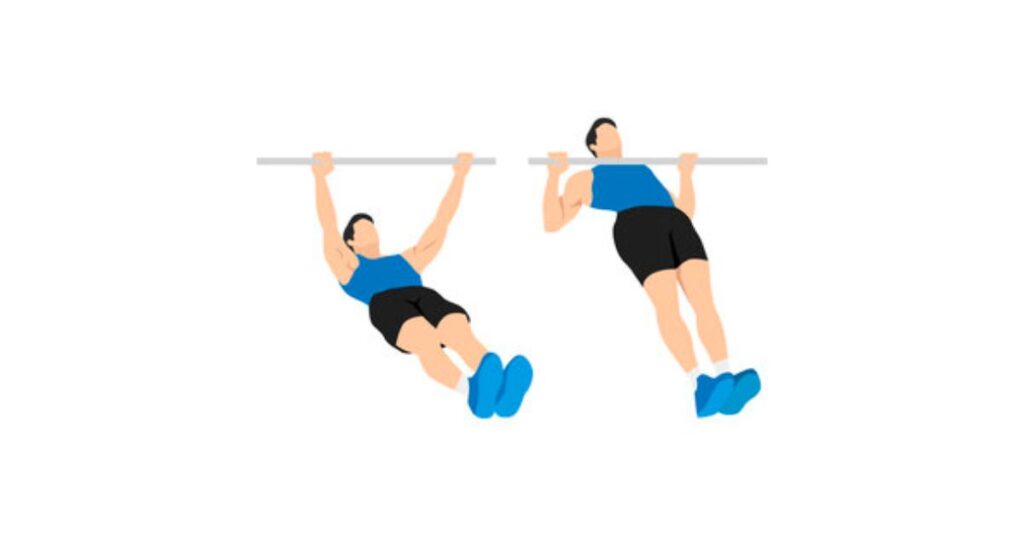
Steps:
- Find a horizontal bar, like a pull-up bar, at waist height.
- Grab the bar with an overhand grip, keeping your body straight.
- Pull your chest toward the bar by bending your elbows.
- Lower yourself back down to the starting position.
Benefits:
- Strengthens the upper and middle back.
- Targets the latissimus dorsi.
- Enhances grip strength and scapular retraction.
8. Push-Ups
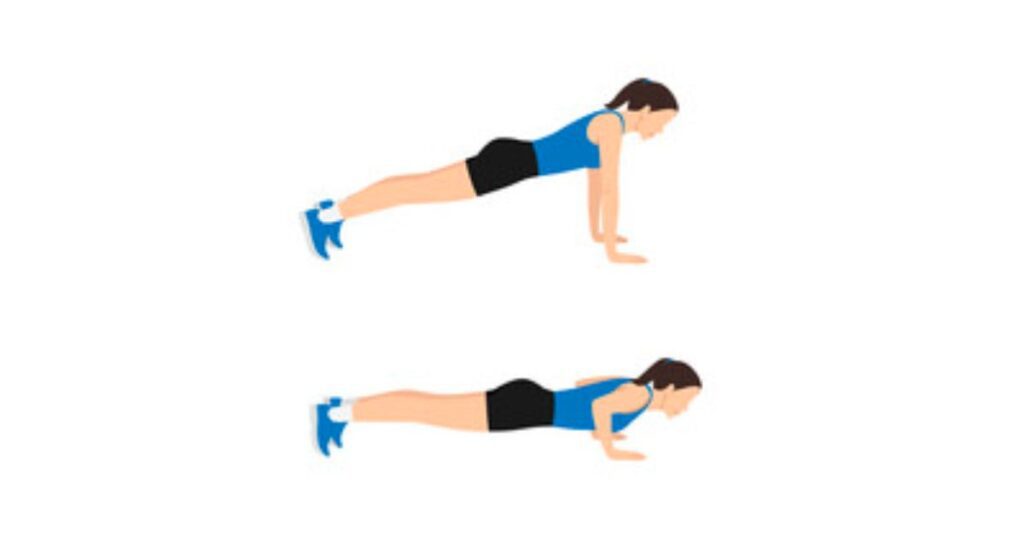
Steps:
- Begin in a plank position with your hands slightly wider than shoulder-width apart.
- Lower your body by bending your elbows.
- Keep your body in a straight line from head to heels.
- Push back up to the starting position.
Benefits:
- Engages the chest, triceps, and upper back.
- Promotes overall upper body strength.
- Enhances shoulder stability.
9. Inverted Rows
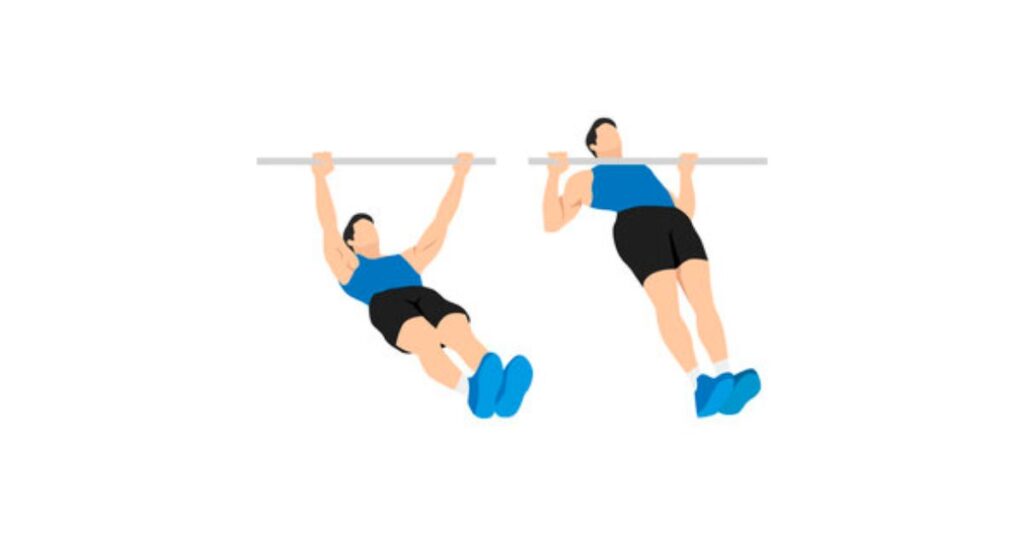
Steps:
- Find a horizontal bar at waist height.
- Lie underneath the bar and grab it with an overhand grip.
- Hang from the bar with your body straight.
- Pull your chest towards the bar by bending your elbows.
- Lower yourself back down to the starting position.
Benefits:
- Strengthens the upper back, including the rhomboids and rear deltoids.
- Improves posture by targeting muscles responsible for scapular retraction.
- Enhances grip strength and back stability.
10. T-Raises
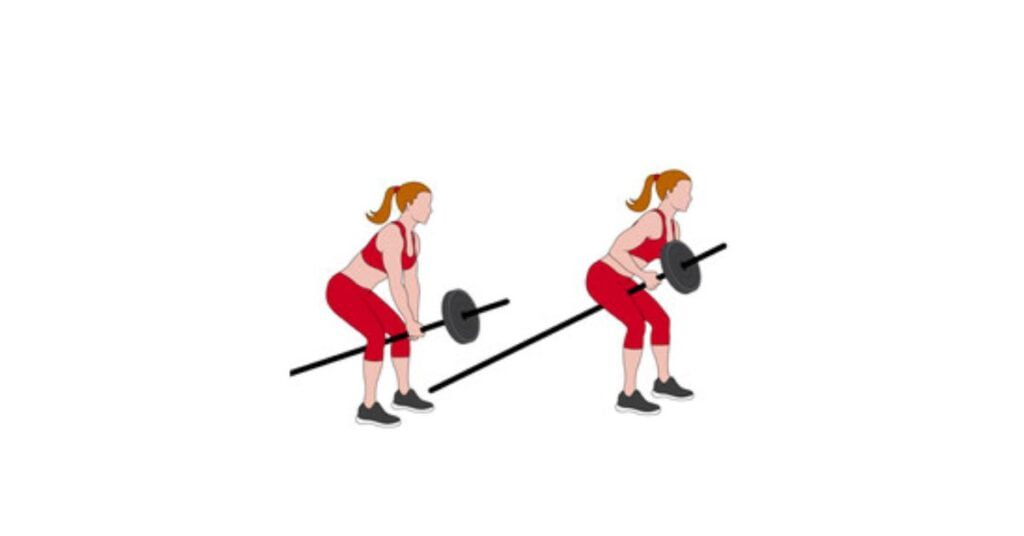
Steps:
- Lie face down on an incline bench, holding a dumbbell in each hand.
- With your arms hanging straight down, lift both dumbbells out to the sides, forming a “T” shape.
- Squeeze your shoulder blades together at the top of the movement.
- Lower the dumbbells back down with control.
Benefits:
- Isolates the rear deltoid muscles.
- Enhances shoulder strength and stability.
- Helps prevent shoulder injuries by balancing out shoulder muscle development.
11. Y-Raises
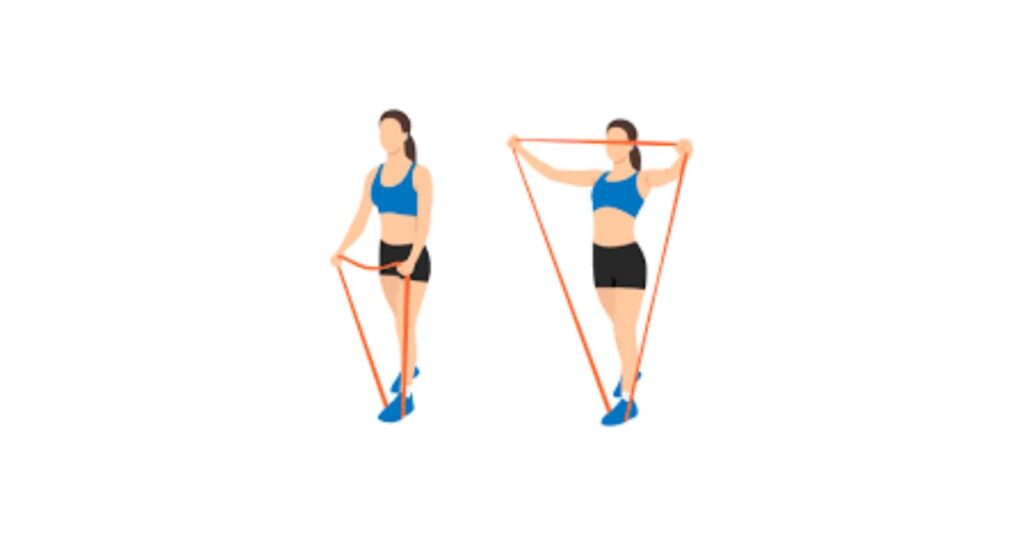
Steps:
- Lie face down on an incline bench, holding a dumbbell in each hand.
- Extend your arms forward and slightly outward to form a “Y” shape.
- Lift the dumbbells while keeping your arms straight.
- Squeeze your shoulder blades together at the top.
- Lower the dumbbells back down slowly.
Benefits:
- Targets the upper trapezius and rear deltoids.
- Improves shoulder stability and posture.
- Enhances shoulder range of motion and scapular control.
12. Face Pulls

Steps:
- Attach a rope handle to a cable machine at chest height.
- Stand facing the machine, grab the rope handles with an overhand grip, and step back.
- Pull the rope towards your face by squeezing your shoulder blades together.
- Keep your elbows high and your upper arms parallel to the ground.
- Slowly release the tension and return to the starting position.
Benefits:
- Focuses on the rear deltoids and upper back muscles.
- Corrects rounded shoulder posture.
- Helps prevent shoulder injuries by strengthening the rotator cuff muscles.
Mid-Back Exercises:
13. Scapular Push-Ups
Steps:
- Begin in a plank position with your hands directly under your shoulders.
- Lower your chest toward the ground while keeping your elbows straight.
- Focus on squeezing your shoulder blades together without bending your elbows.
- Push back up to the starting position.
Benefits:
- Isolates the muscles around the scapula (shoulder blades).
- Enhances scapular mobility and stability.
- Improves posture and helps alleviate upper back and neck tension.
14. Pull-Ups (Assisted if Necessary)
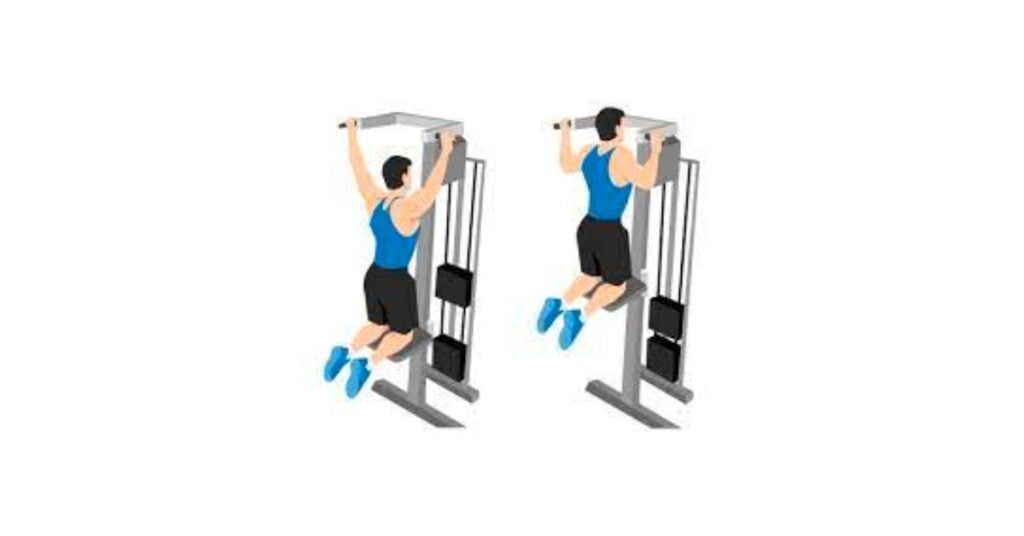
Steps:
- Hang from a horizontal bar with your palms facing away and hands slightly wider than shoulder-width apart.
- Engage your back and pull your body upward until your chin is over the bar.
- Lower your body back down to the hanging position.
- If necessary, use assistance, like resistance bands or a partner, to complete the exercise.
Benefits:
- Strengthens the entire upper back, including the latissimus dorsi.
- Builds grip strength, forearms, and biceps.
- Aids in achieving an impressive range of motion.
15. Dead Hang
Steps:
- Hang from a horizontal bar with your palms facing away and hands shoulder-width apart.
- Allow your body to relax and fully extend, maintaining a passive hang position.
- Breathe deeply and hold the position as long as comfortable.
Benefits:
- Decompresses the spine and alleviates lower back tension.
- Enhances grip strength and endurance.
- Aids in shoulder flexibility and mobility.
16. Australian Pull-Ups
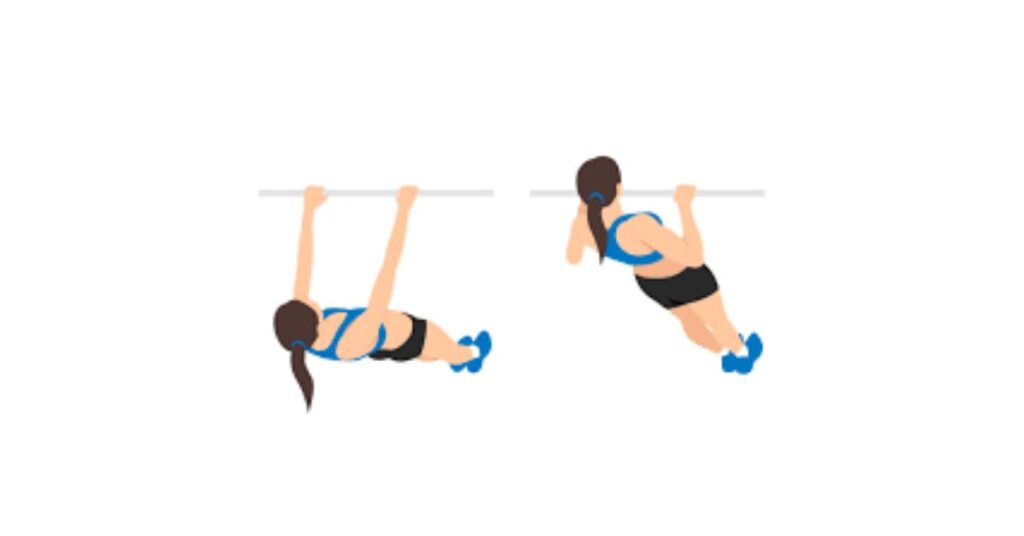
Steps:
- Set up a horizontal bar at waist height.
- Lie on your back beneath the bar, grip it with your palms facing you, and position your body at an angle.
- Pull your chest toward the bar by bending your elbows.
- Lower yourself back down to the starting position.
Benefits:
- Focuses on the upper and middle back muscles.
- Engages the biceps and forearms.
- Improves scapular retraction and upper body stability.
17. Table Rows
Steps:
- Find a sturdy surface, like a table or bar, that you can grip.
- Lie on your back beneath it and grab the surface with an overhand grip.
- Pull your chest toward the table/bar by bending your elbows.
- Lower yourself back down to the starting position.
Benefits:
- Targets the upper back muscles, especially the rhomboids and trapezius.
- Promotes scapular retraction and stability.
- Enhances posture by countering the effects of prolonged sitting and slouching.
Lower Back Exercises:
18. Bridges
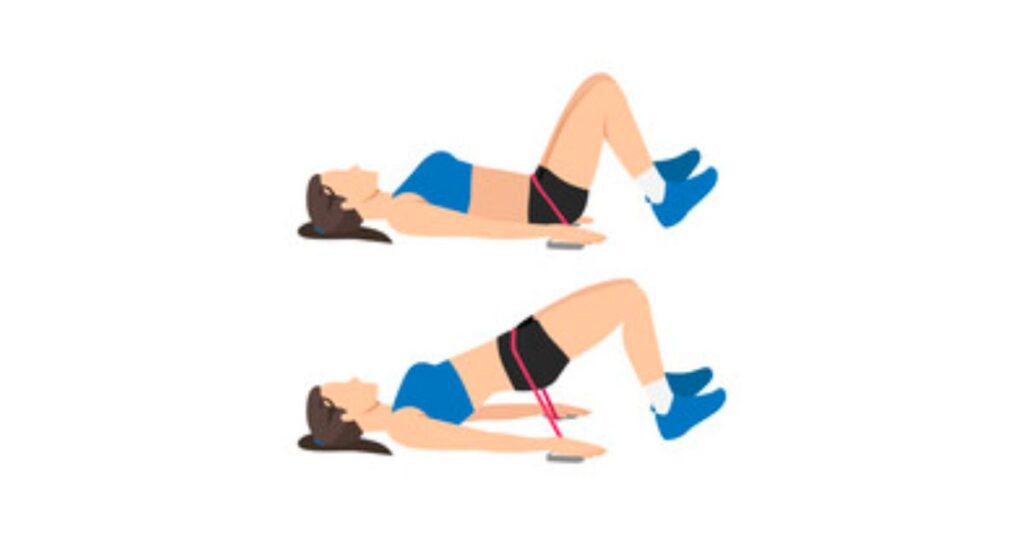
Steps:
- Lie on your back with your knees bent and feet flat on the ground.
- Place your arms at your sides, palms down.
- Push through your heels and lift your hips off the ground.
- Squeeze your glutes and lower back to lift your torso until it forms a straight line with your thighs.
- Hold for a moment, then lower your hips back down to the ground.
Benefits:
- Strengthens the lower back, glutes, and hamstrings.
- Improves lower back mobility and flexibility.
- Promotes better posture by strengthening the muscles that support the spine.
19. Lower Back Extensions
Steps:
- Lie face down on a mat with your arms extended forward and legs straight.
- Lift your chest, arms, and legs off the ground by contracting your lower back muscles.
- Hold for a few seconds, then lower your upper body and legs back down.
Benefits:
- Targets the lower back muscles.
- Increases lower back strength and flexibility.
- Helps alleviate lower back pain and discomfort.
20. Kneeling Lat Stretch
Steps:
- Kneel on the ground with your knees hip-width apart.
- Extend your arms overhead and interlace your fingers.
- Gently lean to one side, keeping your hips stationary, until you feel a stretch along your latissimus dorsi (sides of the back).
- Hold for 15-30 seconds, then switch to the other side.
Benefits:
- Stretches the latissimus dorsi and upper back muscles.
- Relieves tension in the sides and back.
- Improves upper body mobility and flexibility.
21. Child’s Pose
Steps:
- Start on your hands and knees in a tabletop position.
- Sit back onto your heels, lowering your chest toward the ground.
- Extend your arms forward and rest your forehead on the mat.
- Hold and breathe deeply, relaxing into the stretch.
Benefits:
- Stretches the lower back, hips, and shoulders.
- Relieves tension in the back and neck.
- Promotes relaxation and stress relief.
22. Downward Dog
Steps:
- Begin in a plank position with your hands under your shoulders.
- Push your hips upward, lifting your tailbone toward the ceiling.
- Straighten your legs as much as possible while keeping your heels on the ground.
- Press your chest toward your thighs and lengthen your spine.
Benefits:
- Stretches the entire back, hamstrings, and calves.
- Relieves tension in the lower back and shoulders.
- Builds upper body and core strength.
23. Sphinx Pose
Steps:
- Lie face down on a mat with your forearms on the ground and elbows under your shoulders.
- Lift your upper body by pushing through your forearms.
- Keep your hips and legs on the ground, and gaze forward.
Benefits:
- Stretches the abdominal muscles and lower back.
- Promotes improved posture and spinal flexibility.
- Relieves lower back discomfort.
24. Dolphin Kick
Steps:
- Start in a forearm plank position with your forearms on the ground.
- Lift your hips and push your body back, bringing your chest toward your thighs.
- Push back to the plank position, keeping your legs straight.
Benefits:
- Strengthens the lower back, shoulders, and core.
- Improves overall body stability and endurance.
- Enhances posture and spinal strength.
Conclusion
In conclusion, these back exercises and stretches are the foundation of a healthier, more resilient you.
They promote good posture, flexibility, and strength, contributing to your overall well-being.
Remember, fitness is a journey that connects you with your body, so celebrate progress and stay consistent.
Your back is your body’s unsung hero, supporting you through life’s twists and turns.
By investing in its health, you’re investing in your vitality and resilience.
Keep moving, stand tall, and let your strong back be a symbol of your determination and well-being.

